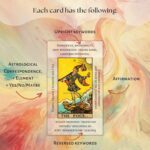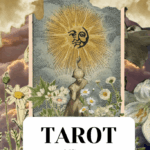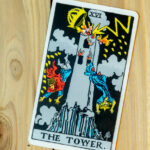Tarot cards, steeped in mysticism and rich symbolism, have fascinated seekers of insight for centuries. Among these enigmatic cards, the Death card stands out, often evoking a visceral reaction. Imbued with transformative energy, the Death card transcends mere mortality to usher in profound shifts in perspective. This exploration of its meaning reveals the layered significance behind one of the most misunderstood cards in the tarot deck.
At first glance, the Death card, often depicted as a skeletal figure clad in dark robes, riding a pale horse, appears foreboding. The imagery typically conjures feelings of dread or anxiety. However, the true essence of this card lies in its representation of endings and new beginnings. It is essential to detach from the instinctive aversion it provokes and examine the broader implications it holds.
In the world of tarot, the Death card symbolizes transformation. It signals the conclusion of a cycle, making way for renewal and rebirth. This cyclical nature is a fundamental aspect of life; everything that exists must eventually cease, thereby allowing space for something new to flourish. The notion of endings is not to be feared but embraced, as they pave the way for growth and evolution.
When the Death card appears in a reading, it often indicates a pivotal transition, a moment where one phase of life is relinquished. This transformation can manifest in various forms, including the end of a relationship, the closing of a chapter in one’s career, or even a significant internal shift in beliefs and attitudes. Embracing these changes leads to personal evolution, offering opportunities for introspection and self-discovery.
Consider the metaphor of a caterpillar’s metamorphosis into a butterfly. The caterpillar must entirely dissolve in order to emerge anew. This vivid transformation serves as an analogy for the journey represented by the Death card. It emphasizes that while the dissolution may seem intimidating, it is the precursor to something exquisitely beautiful. Change, though often uncomfortable, possesses the potential for unparalleled growth.
It’s pivotal to note that the Death card is not an omen of physical death; rather, it signifies a spiritual or emotional rebirth. When grappling with life transitions, this card encourages individuals to release what no longer serves them. To let go is to invite the new. Whether it’s toxic relationships or outdated beliefs, the act of shedding these layers leads to a more authentic existence, fostering inner peace.
Moreover, the Death card compels one to confront the inherent impermanence of life. In our fast-paced, youth-centric society, we often overlook the beauty in transience. Each moment carries a weight of significance, teaching the importance of savoring the present. The invitation here is to reflect on what has run its course in one’s life while also considering that every ending is coupled with the possibility of a fresh start.
In terms of practical application, one may engage actively with the energies of the Death card through self-reflection and journaling. Contemplating questions such as, “What in my life is due for an upgrade?” or “What burdens am I clinging to that inhibit my growth?” facilitates a constructive dialogue with oneself. This process can illuminate paths forward that were previously shrouded in uncertainty, allowing for a renewed sense of clarity and purpose.
Further, the presence of the Death card in a reading signifies an invitation to embrace transformation with grace. It implores the querent to trust the process and surrender to the ebb and flow of life. Much like the changing seasons, which herald different phases of existence, the Death card encapsulates the essence of release and renewal. Acknowledging this natural rhythm fosters resilience and adaptability in the face of inevitable change.
On a deeper level, the Death card also serves as a reminder of the importance of letting go of control. In a world that often glorifies permanence and stability, this card advocates for the acceptance of life’s unpredictability. Learning to navigate uncertainty with an open heart harnesses the energy of the Death card, transforming fear into curiosity and encouraging exploration into uncharted territories.
In conclusion, while the Death card may evoke trepidation at first, its deeper meaning embodies the promise of transformation and renewal. The essence of this card encourages introspection, inviting individuals to reassess their lives and the cycles therein. Its power lies in its ability to shift one’s perspective, revealing that endings are merely precursors to new beginnings. Embracing this truth fosters a profound curiosity about the endless possibilities that await on the other side of transformation. The Death card, therefore, is not merely about loss; it is about the incredible journey that follows, brimming with potential and hope.









Leave a Comment